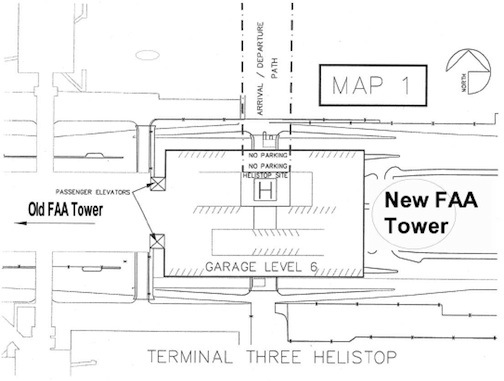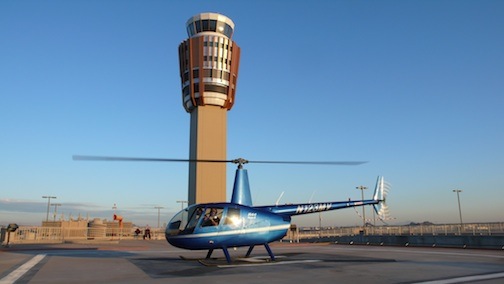Gross Weight ≠ Center of Gravity.
I was recently pointed to a blog post by Tim McAdams, AOPA’s helicopter blogger. [A side note here: It’s nice to see that AOPA has finally realized that the first “A” in its name, which stands for aircraft (not airplane), does indeed include helicopters. I’ve been waiting more than 10 years for this. But I digress.] The post, titled simply “Gross weight,” is a brief discussion of helicopter gross weight and an accident caused by a pilot attempting to fly over max gross weight.
Commenters Miss the Point
Many of the comments following this post mentioned Center of Gravity (CG) or Weight and Balance (W&B). At least two commenters offered links to their Excel worksheets to perform weight and balance calculations for the aircraft they fly. (I also have my own Excel solution for my R44.)
It seemed to me, however, that they were missing the point. The article wasn’t about CG or W&B. It was about weight. You can do the calculations in your head for that:
+ Helicopter Empty Weight (including oil and unusable fuel)
+ Weight of Fuel On Board
+ Weight of pilot and Passengers
—————————————————
= Gross Weight
Take my helicopter, for example. Using the above formula for a flight with half tanks of fuel, me, and two people weighing 150 and 200 pounds on board, the formula would be something like this:
+ 1500
+ 150 (that’s 6 lbs x 25 gallons)
+ 500
————————–
= 2150
Because the max gross weight of my aircraft is 2500 pounds and this total is less, I’d be flying within max gross weight limitations. This does not mean I’m within CG — that’s a different calculation.
This is not higher math. A pilot should be able to make this calculation in a matter of seconds without a piece of paper — and certainly without a computer.
In my opinion, this should be the first calculation a pilot makes when planning a flight. If you’re over max gross weight, don’t even bother doing a W&B calculation. You’ll need to offload some of that weight — fuel, a passenger, cargo — before you can even consider whether it’s loaded within CG limitations.
Max Gross Weight
Although the blog post was titled simply “Gross Weight,” what McAdams was really talking about was max gross weight — the maximum allowable aircraft total weight on takeoff. The two stories he related in his post dealt with aircraft that were likely over max gross weight on takeoff. One flight was uneventful; the other ended in a crash.
There are two aspects to a helicopter’s max gross weight:

IGE Hover Chart for a Robinson R44 Raven II. According to this, a helicopter may be able to hover in ground effect at max gross weight at 6,000 feet when it’s 95°F out.
There’s the max gross weight for the aircraft, which is something you should never — in a perfect world, anyway — exceed. The manufacturer has created this limitation for a variety reasons and the ability to lift off or hover may not be one of them. For example, it could be structural. Would you want to fly a helicopter over max gross weight if you knew that every time you did, you could be putting additional stress on the airframe/blades/etc. that could lead to a failure in a future flight? I wouldn’t.
- There’s a practical max gross weight as it applies to high density altitude. Look at the performance charts. Can you maintain an IGE hover at max gross weight when the LZ is at 6,000 feet and it’s 95°F out? I do a lot of high density altitude flying in Arizona and I’ve experienced a wide range of weight and density altitude situations. I can assure you, max gross weight might be a limiting factor at sea level, but it’s an optimistic number at high DA.
I flew at the Grand Canyon one season and got to know the operation very well. Some helicopters simply weren’t as powerful as others — even within the same make and model. For example, on a hot day, if I were flying a certain ship, I wouldn’t take a load that put me within 200 lbs of max gross weight. To the company’s credit, they knew which ships were the “dogs” and tended to load them lighter. I distinctly remember being asked over the radio while waiting on the pad if I could take 4000 pounds in the ship I was flying that day — one of the dogs. It was over 90°F and the ship had been flying sluggishly since noon. When I said no, they shuffled the passengers around to lighten my load.
It’s Up to the Pilot
McAdams’ first story explains how one pilot refused to take a heavy load while another stepped right up and took over. He quotes a non-pilot bystander as saying “Now there goes a real pilot.”
This is the attitude that’ll shorten a pilot’s career — and possibly his life. The attitude that says, “I’m a better pilot because I can handle the heavy load that this wimpy pilot won’t try.” The attitude that ignores aircraft limitations and flying conditions just to prove you can do something that a wiser pilot won’t attempt.
You know about old pilots and bold pilots, right?
[Another side note: When I flew at the Canyon, late in the season, the last fight of the day for one of the routes had the pilot facing right into the low-lying sun at a critical point in the flight: just as we were attempting to climb up the side of a canyon wall in a relatively confined area to fly over the North Rim. My eyes are extremely light sensitive — which is why I just about always wear sunglasses outside — and I simply could not see in front of me when I flew this part of the route at this time of day. So I asked the lead pilot to not put me on that route for the last flight of the day. Although he was obviously pissed off, he complied –probably because there were at least eight other pilots on duty who simply didn’t care and would do the flight without question. My point: don’t fly beyond your comfort level.]
Real Weights
McAdams’ second story, about the crashed heavy helicopter, relates how the pilot estimated weights: 150 lbs per passenger. Ah, if only our passengers were that light!
The FAA’s estimate is closer to 190 per person average.
In a perfect world, we’d be able to weigh every single passenger, fully dressed and holding their carry-on things, moments before the flight. Those weights would be used in our calculation. This is exactly what they did where I worked at the Grand Canyon, so they never loaded a ship over max gross weight and always had perfectly accurate numbers for CG calculations.
Nowadays, most of my flights are booked by phone and I have to trust passengers to give me accurate weights when they book. But I don’t. I add 10 pounds to each person. If the caller is estimating the weight of another passenger, I add 20 pounds. It’s better to overestimate the weight than underestimate it.
Center of Gravity
One more thing: being out of CG and being over max gross weight are two separate things. While you can be in both conditions, you can also be in either condition. This means that you can be within max gross weight limitations but still be out of CG.
But I’ll save a discussion of that for another post.



 If you saw my office, you’d never believe that I truly like to be organized. I hate clutter, I hate piles of junk lying around, I hate not being able to find things.
If you saw my office, you’d never believe that I truly like to be organized. I hate clutter, I hate piles of junk lying around, I hate not being able to find things.
 This year, I received a bumper crop of pre-printed return address labels. I got some with autumn colors and decorations (leaves and pumpkins), some with Thanksgiving themes (turkeys and cornucopias), and plenty with Christmas themes (Christmas trees, snowmen, candy canes, and wreaths). I kept them all. After all, I still do send out the occasional piece of mail, and it’s nice to have a colorful return address label to put on it.
This year, I received a bumper crop of pre-printed return address labels. I got some with autumn colors and decorations (leaves and pumpkins), some with Thanksgiving themes (turkeys and cornucopias), and plenty with Christmas themes (Christmas trees, snowmen, candy canes, and wreaths). I kept them all. After all, I still do send out the occasional piece of mail, and it’s nice to have a colorful return address label to put on it.